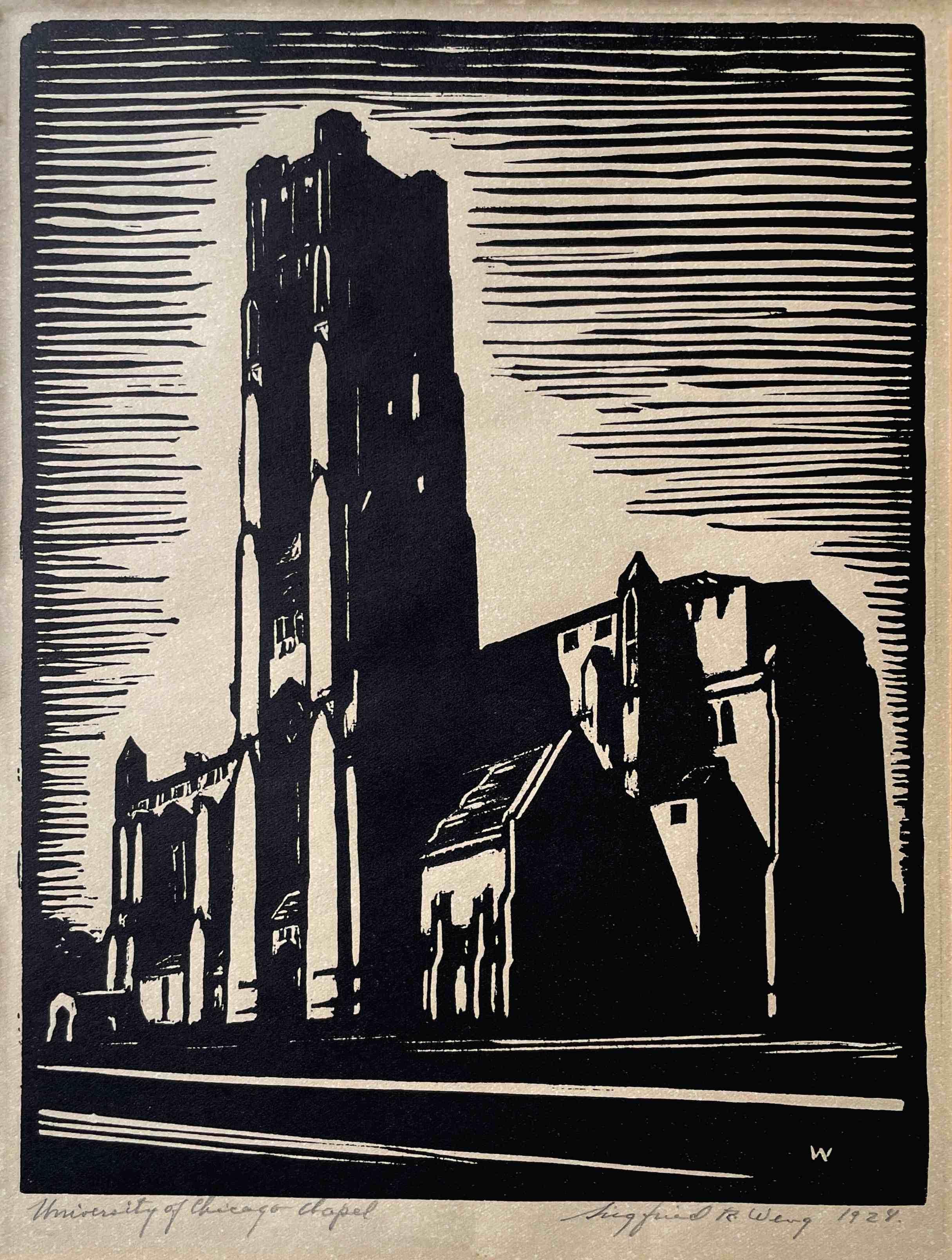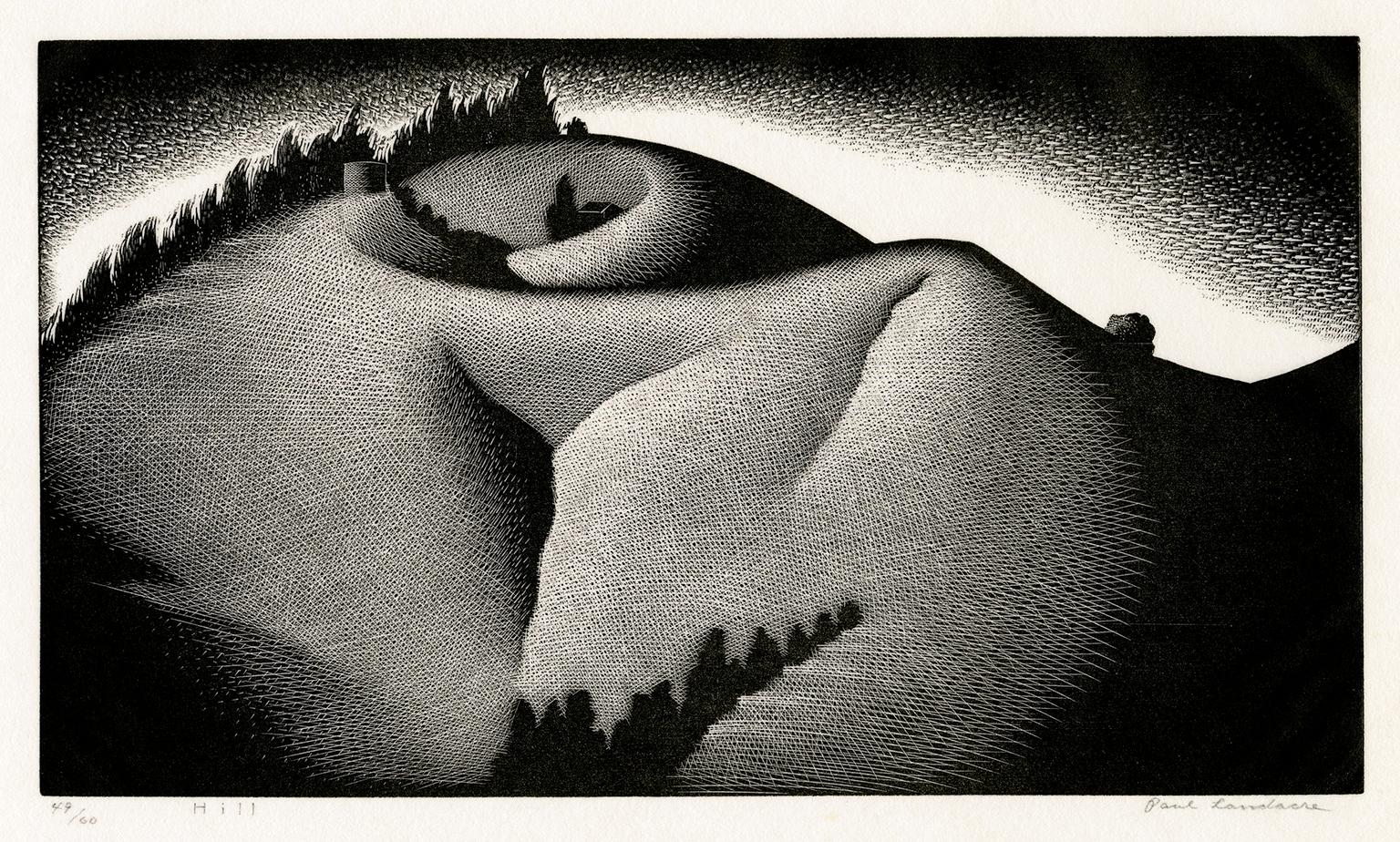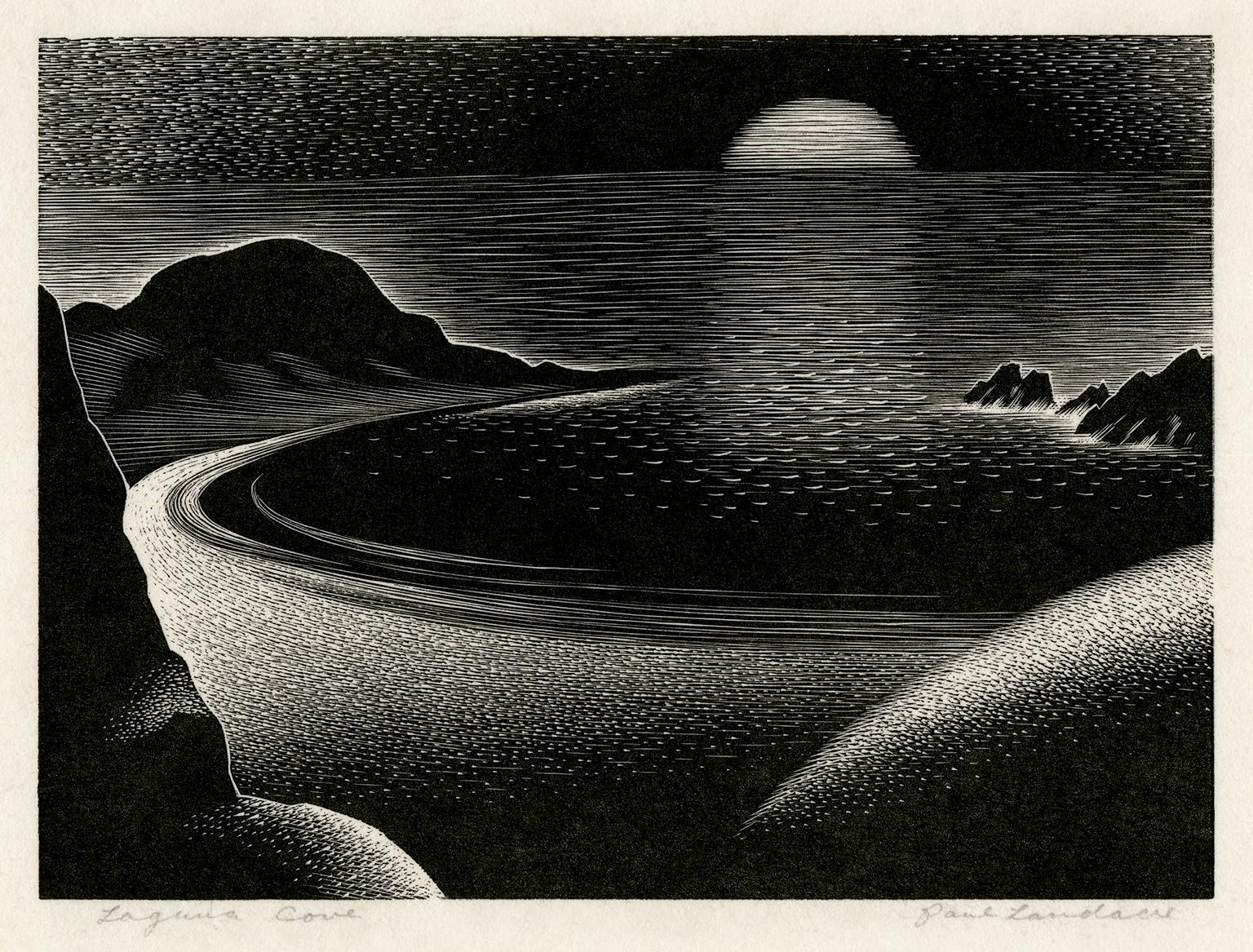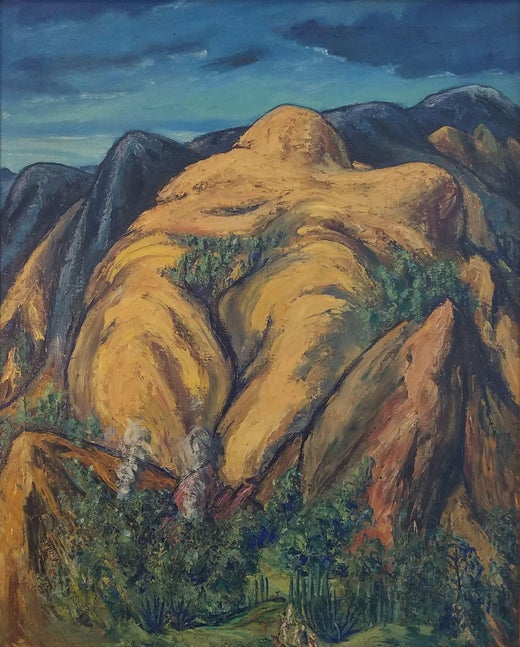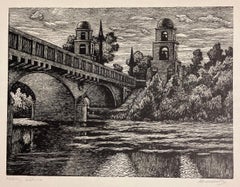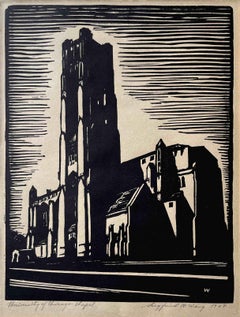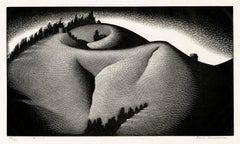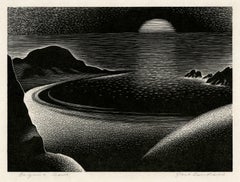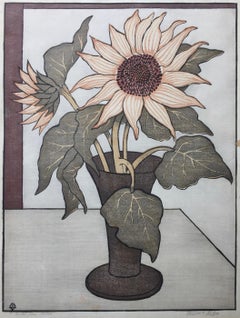Items Similar to Hendrik Glintenkamp, (Farmyard)
Want more images or videos?
Request additional images or videos from the seller
1 of 5
Hendrik GlintenkampHendrik Glintenkamp, (Farmyard)1928
1928
About the Item
More a wood engraving rather than a woodcut, Glintenkamp's Farmyard scene was given all the care and detail of the artist's more complex images. It is signed and numbered in pencil. Edition of 50.
- Creator:Hendrik Glintenkamp (1887 - 1946, American)
- Creation Year:1928
- Dimensions:Height: 4 in (10.16 cm)Width: 6 in (15.24 cm)
- Medium:
- Movement & Style:
- Period:
- Condition:Very minor staining.
- Gallery Location:New York, NY
- Reference Number:1stDibs: LU141026951872
Hendrik Glintenkamp
The painter and illustrator Henry Glintenkamp (1887-1946) is known mainly for his anti-war illustrations that appeared in The Masses and other publications in the early twentieth century. As a painter, he was additionally successful, particularly in his landscape and urban scenes. Born in Augusta, New Jersey, the son of Hendrik and Sophie Dietz Glintenkamp, Henry received his elementary art training at the National Academy of Design (1903-06) before his study with Robert Henri the two years following. Henri consequently attracted artists like Glintenkamp interested in returning to a sense of human qualities. Setting up his studio in the Lincoln Arcade Building with Stuart Davis and Glenn O. Coleman, Glintenkamp did work that reflects a preoccupation with urban scenes and landscapes. In May of 1910 Glintenkamp exhibited his works as a student at the Henri School and at the Exhibition of Independent Artists of 1910. Two years later, he accepted the position of instructor at the Hoboken Arts Club in New Jersey and in 1913, he took up with others in the organization of The Masses, designed as a publication devoted to humanitarian causes. This publication stood in stark opposition to war, as its articles and cartoons reflected pacifism. At the Armory Show (1913), Glintenkamp exhibited The Village Cemetery. In 1917, Glintenkamp moved to Mexico to avoid the draft, and remained there until 1924, supporting "the socialist agenda of Mexico's new leadership." The period following 1917 marks a new phase in the artist's development. Brighter in color and compositionally more involved, his later works are more discordant than the artist's earlier work. The artist sacrificed the atmospheric quality of the limited palette for the increased influence of modernist movements. After extensive travels in Europe, Glintenkamp returned to New York in 1934, and became a teacher at the New York School of Fine and Industrial Art and the John Reed Club School of Art. As chairman for the committee responsible for the organization of an Exhibition in Defense of World Democracy, in 1937, Glintenkamp continued his humanitarian purpose, though never really took up with the socialist rebels, many of whom followed similar groups and publications. Indeed, Glintenkamp was instrumental in founding the American Artists' Congress; he continued serving its needs as both the organization's president and secretary. A peripheral member of the impressionist-tonalist group in his early career, Glintenkamp had progressed through many American movements by the time of his death in 1946.
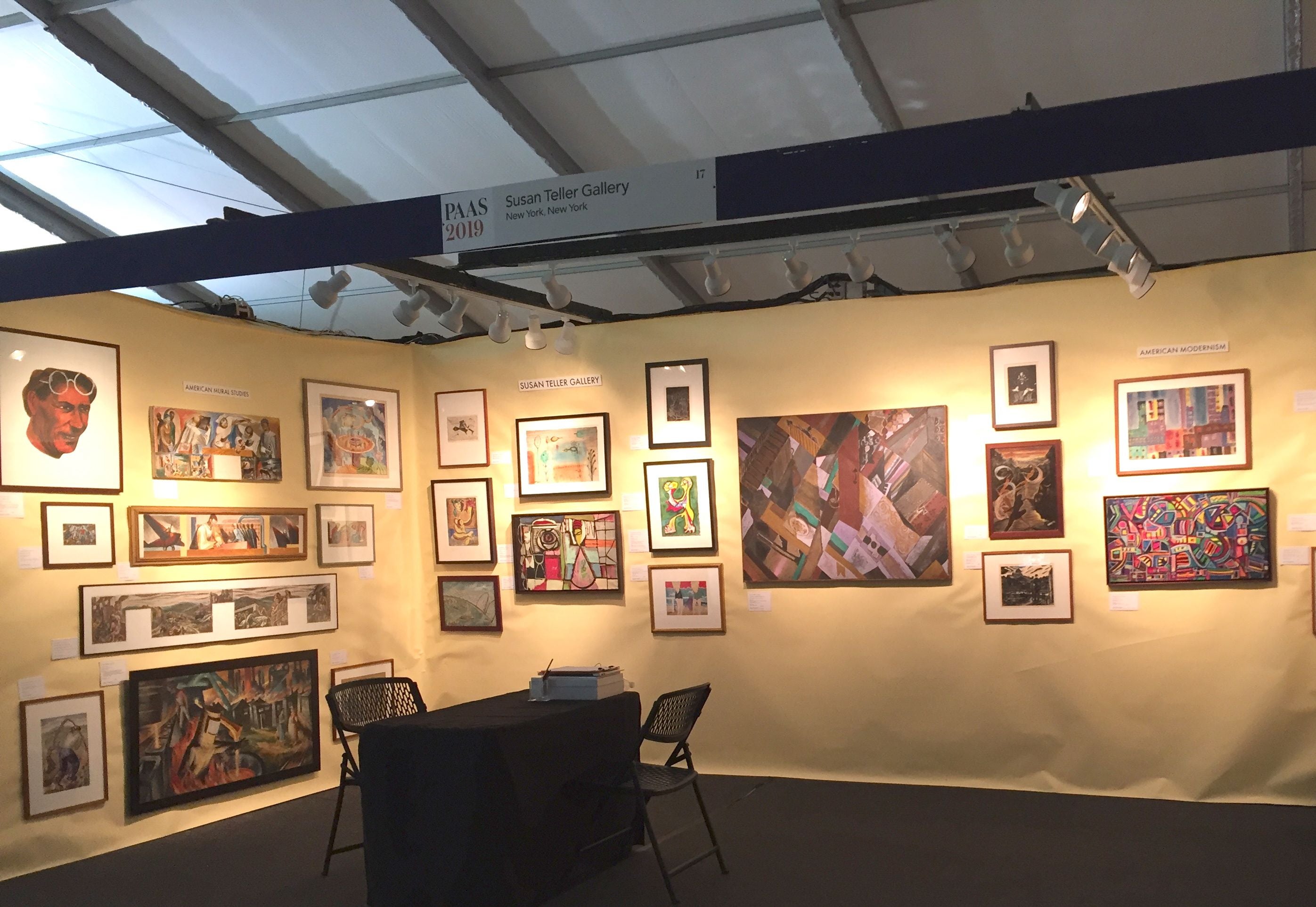
About the Seller
4.9
Gold Seller
Premium sellers maintaining a 4.3+ rating and 24-hour response times
Established in 1988
1stDibs seller since 2020
114 sales on 1stDibs
Typical response time: 1 hour
- ShippingRetrieving quote...Shipping from: New York, NY
- Return Policy
Authenticity Guarantee
In the unlikely event there’s an issue with an item’s authenticity, contact us within 1 year for a full refund. DetailsMoney-Back Guarantee
If your item is not as described, is damaged in transit, or does not arrive, contact us within 7 days for a full refund. Details24-Hour Cancellation
You have a 24-hour grace period in which to reconsider your purchase, with no questions asked.Vetted Professional Sellers
Our world-class sellers must adhere to strict standards for service and quality, maintaining the integrity of our listings.Price-Match Guarantee
If you find that a seller listed the same item for a lower price elsewhere, we’ll match it.Trusted Global Delivery
Our best-in-class carrier network provides specialized shipping options worldwide, including custom delivery.More From This Seller
View AllJoseph Zirker, Playhouse
By Joseph Zirker
Located in New York, NY
In the 1950s woodcuts started to get bigger and bigger as they competed with paintings for a space on the wall. This California print by Joseph Zirke...
Category
1950s American Modern Figurative Prints
Materials
Woodcut
Albert Abramovitz, Mission, California
By Albert Abramovitz
Located in New York, NY
Albert Abramovitz was an amazingly skilled wood engraver. This California Mission scene is unusual in his work, but carries the subject so well. It is signed and titled in pencil.
Category
1940s American Modern Figurative Prints
Materials
Woodcut
Fiske Boyd, The Hay-Meadow
Located in New York, NY
Boyd was a master printmaker. This wood engraving is a marvel of open space.
There may have been a horizontal crack in the block. There's a disconnect running across the center. At...
Category
Mid-20th Century American Modern Landscape Prints
Materials
Woodcut
Henry R. Diamond, Whaler
By Henry R. Diamond
Located in New York, NY
Really a wood engraving rather than a woodcut, Henry R. Diamond's Whaler is majestic. It is signed and titled in pencil.
Category
Early 20th Century American Modern Landscape Prints
Materials
Woodcut
A. Ross Pittman, Summer Home
Located in New York, NY
This print is signed and titled in pencil. A native of Tennessee and a physician, Pittman began to make prints in 1936 in Trenton, New Jersey. However, scene of his home state remain...
Category
1930s American Modern Landscape Prints
Materials
Woodcut
Ted Davies, El Station (New York City), woodcut
By Ted Davies
Located in New York, NY
In the 1950s woodcuts were getting bigger and bigger. This one isn't gigantic, but at an image size of 17 x 11 inches it is substantial. And of course NYC's El Trains and their stati...
Category
Mid-20th Century American Modern Figurative Prints
Materials
Woodcut
You May Also Like
A Handsome Woodcut on Paper of the Univ. of Chicago Chapel by Siegfried Weng
Located in Chicago, IL
A handsome woodcut on paper of the University of Chicago Chapel by artist Siegfried Weng. A perfect gift for your U of C grad! Arwork size:
9 3/4" x 7 1/2". Archivally matted to...
Category
1920s American Modern Landscape Prints
Materials
Paper, Woodcut
'Hill' — American Modernism, California
By Paul Landacre
Located in Myrtle Beach, SC
Paul Landacre, 'Hill', wood engraving, 1936, edition 60 (only 54 printed); only 2 impressions printed in a second edition of 150. Signed, titled, and numbered '49/60' in pencil. Wien...
Category
1930s American Modern Landscape Prints
Materials
Woodcut
'Laguna Cove' — American Modernism, California
By Paul Landacre
Located in Myrtle Beach, SC
Paul Landacre, 'Laguna Cove', wood engraving, 1935; edition 60 (16 printed), 2nd edition 150 (6 printed), Woodcut Society 200, Wien 247. Signed and titled in pencil. A brilliant, black impression, on cream wove Japan, with full margins (3/4 to 1 3/4 inches), in excellent condition. Archivally matted to museum standards, unframed.
This impression is from the edition published for the Twentieth Presentation Print of the Woodcut Society, 1941. Printed by Torch Press, Cedar Rapids.
Literature: Reproduced in 'James Swann...
Category
1930s American Modern Landscape Prints
Materials
Woodcut
THE SUNFLOWER
Located in Santa Monica, CA
ANDERS ALDRIN (Swedish /American 1889 – 1970)
THE SUNFLOWER ca. 1935 (Newark Museum 9)
Color woodcut, edition c. 150. Signed, unnumbered, but dedicat...
Category
1930s American Modern Landscape Prints
Materials
Woodcut
Tranquil Harbor (Gloucester, Massachusetts) — 1950s Cape Ann Regionalism
By Lawrence Wilbur
Located in Myrtle Beach, SC
Lawrence Nelson Wilbur (1897-1988), 'Tranquil Harbor' (Gloucester, Massachusetts), wood engraving, edition 55, 1958. Signed in pencil, and signe...
Category
1950s American Modern Landscape Prints
Materials
Woodcut
'Jones Island' original woodcut engraving by Gerrit Sinclair
By Gerrit Sinclair
Located in Milwaukee, WI
The print 'Jones Island' is something of a self portrait. In the image, an artist stands before and easel, depicting the docks and buildings on the coast. The title indicates that this is Jones Island in Milwaukee, the peninsula along Lake Michigan that today is home to largely industrial buildings. The buildings and figures in the print suggest that this might be a view of the last of the Kashubian or German immigrant settlements on the peninsula before they were evicted in the 1940s to make way for the development of the harbor. The artist in the image thus acts as a documentarian of these peoples. The careful line-work of the woodblock engraving adds a sense of expressionism to the scene, leaving the figures and buildings looking distraught and dirty, though the image nonetheless falls into the Social Realist category that dominated American artists during the Great Depression.
This print was published in 1936 as part of the Wisconsin Artists' Calendar for the year 1937, which included 52 original, hand-made prints – one for each week of the year.
6 x 5 inches, image
10 x 7.13 inches, sheet
13.43 x 12.43 inches, frame
Signed "GS" in the print block,upper left
Entitled "Jones Island" lower left (covered by matting)
Inscribed "Wood Engraving" lower center (covered by matting)
Artist name "Gerrit V. Sinclair" lower right (covered by matting)
Framed to conservation standards using 100 percent rag matting and museum glass, all housed in a silver gilded moulding.
Gerrit Sinclair studied at the Art Institute of Chicago from 1910 - 1915, under Vanderpoel, Norton, and Walcott. In World War I, he served in the Army Ambulance Corps and later recorded his experiences in a series of oil paintings. He taught in Minneapolis before arriving in Milwaukee in 1920 to become a member of the original faculty of the Layton School of Art. He was also a member of the Wisconsin Painters & Sculptors.
Sinclair's paintings and drawings were executed in a lyrical, representational style, usually expressing a mood rather than a narrative. His paintings reveal a great sensitivity for color and atmosphere. His subject matter focused on cityscapes, industrial valleys, and working-class neighborhoods, captured from eye-level. A decade before the popularity of Regionalism, Sinclair's strong interest in the community was reflected not only in his paintings, but also in his encouragement to students to return to their communities as artists and teachers. Joseph Friebert...
Category
1930s American Modern Figurative Prints
Materials
Engraving, Woodcut
